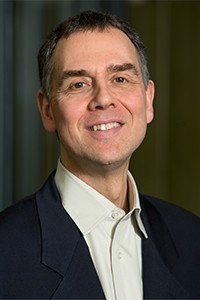
Ellad B. Tadmor
Professor, Russell J. Penrose Professor
Ellad B. Tadmor
Professor, Russell J. Penrose Professor

Professor, Russell J. Penrose Professor
Professor, Russell J. Penrose Professor
Professor Tadmor's research focuses on understanding material response from fundamental principles rather than phenomenology. Tadmor studies microscopic processes that lead to macroscopic phenomena such as fracture and plasticity using atomic-scale modeling and multiple-scale techniques. Professor Tadmor is also interested, on a more basic level, in the connection between continuum theory and atomistic models. Some recent specific topics include:
Ph.D., Solid Mechanics, Brown University, USA, 1996
M.Sc., Mechanical Engineering, Technion, Israel, 1991
B.Sc., Mechanical Engineering, Technion, Israel, 1987
Professor, Aerospace Engineering & Mechanics, University of Minnesota, 2006-Present
Associate Professor, Faculty of Mechanical Engineering, Technion, 2005-2006
Senior Lecturer, Faculty of Mechanical Engineering, Technion, 1999-2004
Lecturer, Faculty of Mechanical Engineering, Technion, 1998-1999
Postdoctoral Research Associate, Division of Engineering and Applied Science, Harvard University, 1996-1998
Adjunct Professor and Research Associate, Division of Engineering, Brown University, 1996
Research Engineer, Structural Analysis Group, Weapon Systems Division, RAFAEL - Israel Armament Development Authority, 1989-1991
2017: Plenary Speaker, Res Metallica Symposium
2014: Plenary Speaker - 2nd Annual Mach Conference
2012: Plenary Speaker - 32nd Israeli Conference on Mechanical Engineering
2012: Plenary Speaker - 52nd Sanibel Symposium
2003: Student Council, Faculty of Mechanical Engineering, Technion- ME Student Council Award for Best Lecturer
2000-2001: Technion Award for Excellence in Teaching
2001: Salomon Simon Mani Award for Excellence in Teaching
1998-1999: Technion Award for Excellence in Teaching
1998-2000: ATS Women's Division - Jacob Ullmann Academic Lectureship
1997: NSF Fellowship to attend CECAM workshops in France
1995: MRS Graduate Student Award
1990: RAFAEL Professional Excellence Award
Zhang, K. & Tadmor, E. B. , 2018, Structural and electron diffraction scaling of twisted graphene bilayers, Journal of the Mechanics and Physics of Solids , (Journal Article)
Kim, W. K. & Tadmor, E. B., 2017, Accelerated quasicontinuum: a practical perspective on hyper-QC with application to nanoindentation, Philosophical Magazine, p. 1-33, (Journal Article)
Tadmor, E. B. & Miller, R. E., 2017, Benchmarking, validation and reproducibility of concurrent multiscale methods are still needed, Modelling and Simulation in Materials Science and Engineering, Vol. 25, Issue 7, Article 071001, (Journal Article)
Gerberich, W., Tadmor, E. B., Kysar, J., Zimmerman, J. A., Minor, A. M., Szlufarska, I., Amodeo, J., Devincre, B., Hintsala, E. & Ballarini, R., 2017, Review Article: Case studies in future trends of computational and experimental nanomechanics, Journal of Vacuum Science and Technology A: Vacuum, Surfaces and Films, Vol. 35, Issue 6, Article 060801, (Journal Article)
Singh, A. & Tadmor, E. B., 2017, Simulating the superheating of nanomaterials due to latent heat release in surface reconstruction, International Journal of Heat and Mass Transfer, Vol. 107, p. 792-804, (Journal Article)